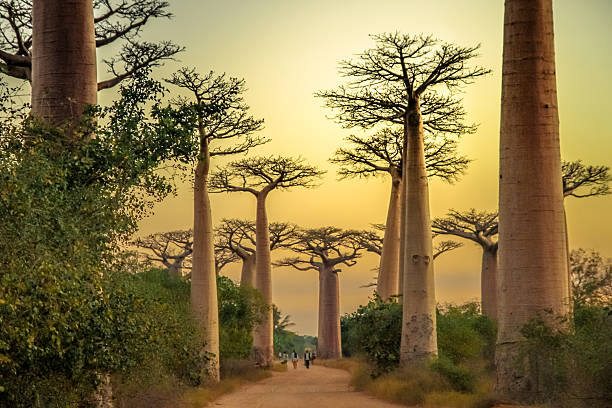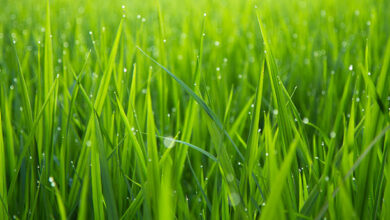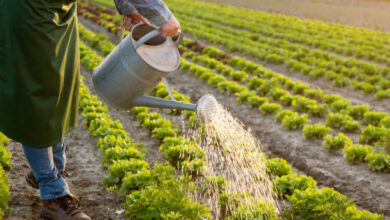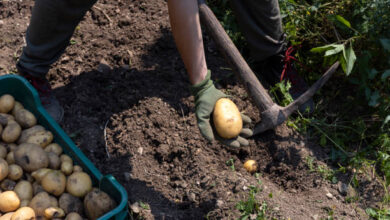
Are There Baobab Trees in Nigeria? Find Out.
The majestic baobab tree, often referred to as the ‘Tree of Life,’ is renowned for its unique appearance and cultural significance. But are there baobab trees in Nigeria? In this blog post, we’ll explore the presence of baobab trees in Nigeria, their significance, and where you can find them. Understanding the distribution of baobab trees can shed light on Nigeria’s rich biodiversity and cultural heritage.
Overview of Baobab Trees
Baobabs (Adansonia species) are among the most iconic and fascinating trees in the world, known for their enormous trunks, long lifespans, and unique ability to store water. These trees are primarily found in Africa, with some species also native to Madagascar and Australia. They play a crucial role in their ecosystems and have numerous uses for local communities.
Unique Characteristics
- Massive Trunks: One of the most striking features of baobab trees is their enormous, bulbous trunks. These trunks can reach up to 25 meters in circumference. The trunk serves as a water storage reservoir, enabling the tree to survive in arid conditions. During the rainy season, baobabs absorb and store water in their trunks, which they can use during drought periods.
- Longevity: Baobab trees are known for their incredible lifespans, with some trees estimated to be over 1,000 years old. Their ability to live for centuries makes them vital witnesses to the environmental changes and human activities in their regions.
- Deciduous Nature: Unlike many other trees in their habitats, baobabs are deciduous, shedding their leaves during the dry season to conserve water. This adaptation is crucial for their survival in the hot, dry climates where they are typically found.
- Distinctive Appearance: Baobabs have a unique and easily recognizable appearance. Their thick, cylindrical trunks often taper dramatically at the top, giving them a bottle-like shape. The branches of baobab trees are relatively short and spread outwards, creating a canopy that can resemble an upside-down root system.
Global Distribution
Baobabs are predominantly found in the African savannah, with the highest concentration in sub-Saharan Africa. There are eight species of baobab trees, six of which are native to Madagascar, one to mainland Africa, and one to Australia.
- Africa: The African baobab (Adansonia digitata) is the most widespread species and is found in many countries across the continent, including South Africa, Botswana, Namibia, and, of course, Nigeria.
- Madagascar: Home to six unique species, Madagascar boasts the greatest diversity of baobabs. These species are adapted to the island’s diverse ecosystems and play a critical role in maintaining ecological balance.
- Australia: The Australian baobab (Adansonia gregorii) is found in the northwestern part of the country, specifically in the Kimberley region of Western Australia and the Northern Territory.
Ecological Importance
Baobabs are keystone species in their environments, meaning they have a disproportionately large impact on their ecosystems relative to their abundance. Here are some key ecological roles they play:
- Water Storage: The ability of baobabs to store water makes them a critical resource during drought periods, not just for themselves but also for other species that rely on the water they release.
- Habitat Provision: The hollow trunks and large canopies of baobab trees provide shelter and nesting sites for various animals, including birds, insects, and small mammals. The cavities in older trees are particularly valuable for wildlife.
- Soil Enrichment: Baobab trees contribute to soil fertility through leaf litter, which decomposes and enriches the soil with organic matter. This nutrient-rich soil supports the growth of other plant species around the baobabs.
Nutritional and Medicinal Uses
The baobab tree is often referred to as the “Tree of Life” because of the numerous benefits it provides to human communities. Its fruit, leaves, and bark have significant nutritional and medicinal properties.
- Fruit: Baobab fruit, sometimes called “monkey bread,” is rich in Vitamin C, antioxidants, and essential minerals like calcium and potassium. The fruit pulp is used to make beverages, jams, and nutritional supplements. It has a tangy, citrus-like flavor and is highly valued for its health benefits.
- Leaves: The leaves of the baobab tree are edible and are often used in traditional dishes. They are rich in nutrients such as vitamins A and C, calcium, and proteins. In many African countries, dried baobab leaves are used to make a nutritious soup.
- Bark and Roots: The bark of the baobab tree has medicinal properties and is used in traditional medicine to treat various ailments, including fever, digestive issues, and inflammation. The fibers from the bark are also used to make ropes, baskets, and cloth.
- Seeds: Baobab seeds can be ground into a powder or pressed to extract oil, which is used in cooking and cosmetics. The oil is rich in essential fatty acids and has moisturizing properties, making it a popular ingredient in skincare products.
Presence of Baobab Trees in Nigeria
Baobab trees have been part of Nigeria’s landscape for centuries, playing a significant role in local ecosystems and cultures. These trees are commonly found in the northern regions of Nigeria, particularly in states like Kano, Sokoto, and Katsina. Notable locations such as the Yankari National Park and the Sahel savannah are known for their baobab populations.
Cultural and Economic Significance in Nigeria
Baobabs hold cultural significance in Nigerian folklore, traditional medicine, and rituals. The fruit, leaves, and bark of baobab trees are used in various economic activities. For example, the fruit pulp is rich in Vitamin C and is used to make beverages and nutritional supplements. The leaves are used in traditional dishes, and the bark has medicinal properties.
Communities in northern Nigeria utilize baobab trees extensively. In some areas, baobabs serve as meeting points for villagers and play a role in social and cultural gatherings. The economic uses of baobab products help support local economies, providing income through the sale of fruit, leaves, and other products.
You May Love To Read
What Climate Zone is Missouri In? A Comprehensive Guide
What Planting Zone is Missouri? Your Guide to Gardening Success
Conservation and Sustainability Efforts
Despite their resilience, baobab trees face environmental threats such as deforestation and climate change. Conservation initiatives by government and non-governmental organizations aim to protect and preserve baobab trees in Nigeria. Programs focus on planting new trees, educating communities about sustainable practices, and promoting the economic benefits of baobab conservation.
Individuals can contribute to these efforts by supporting sustainable practices, participating in tree-planting initiatives, and raising awareness about the importance of baobabs. Simple actions, such as choosing products made from sustainably harvested baobab, can make a significant impact.
Conclusion
In conclusion, baobab trees are indeed present in Nigeria, particularly in the northern regions. They hold significant cultural and economic importance and are crucial to local ecosystems. Efforts to conserve and sustain baobab populations are essential for preserving this unique and valuable tree.




